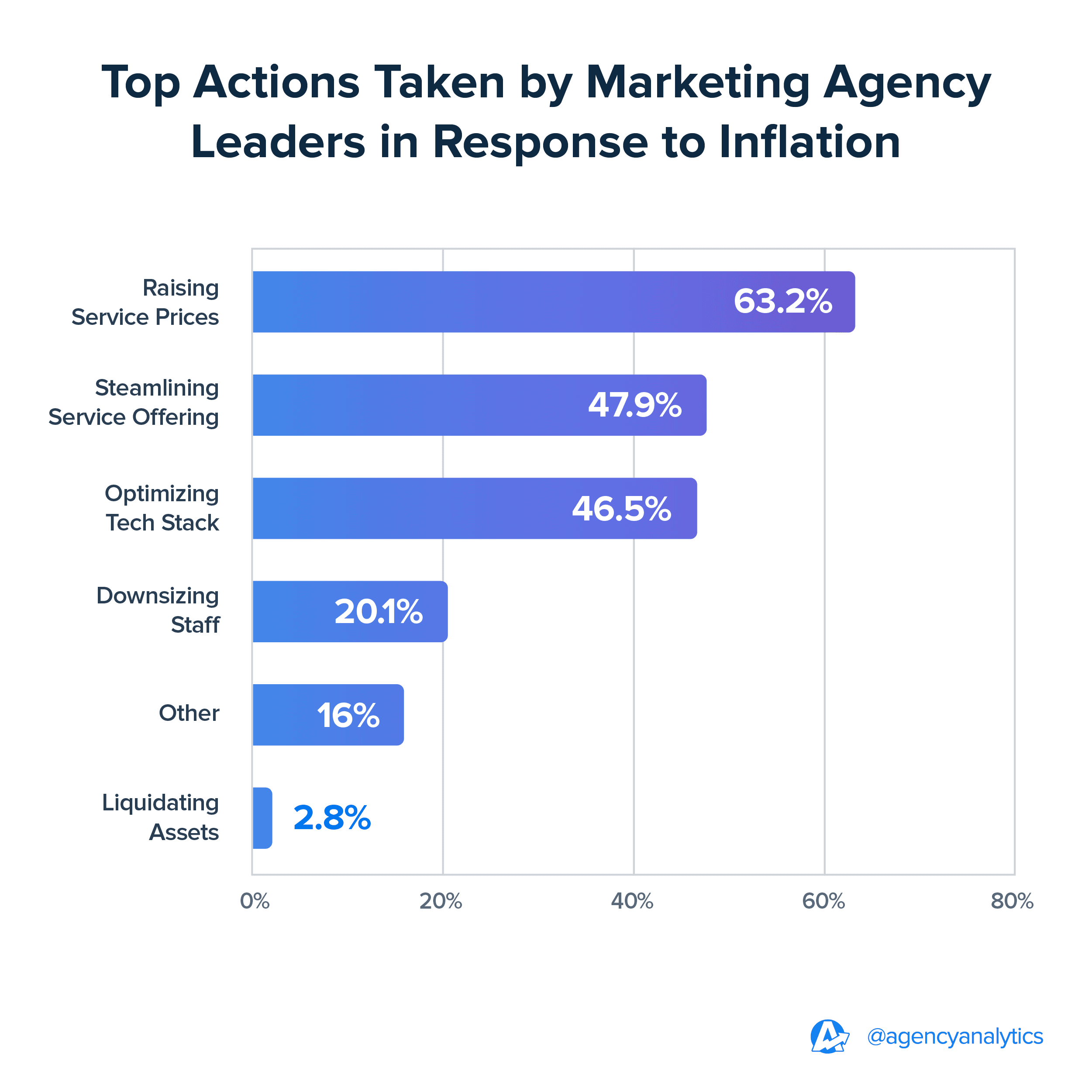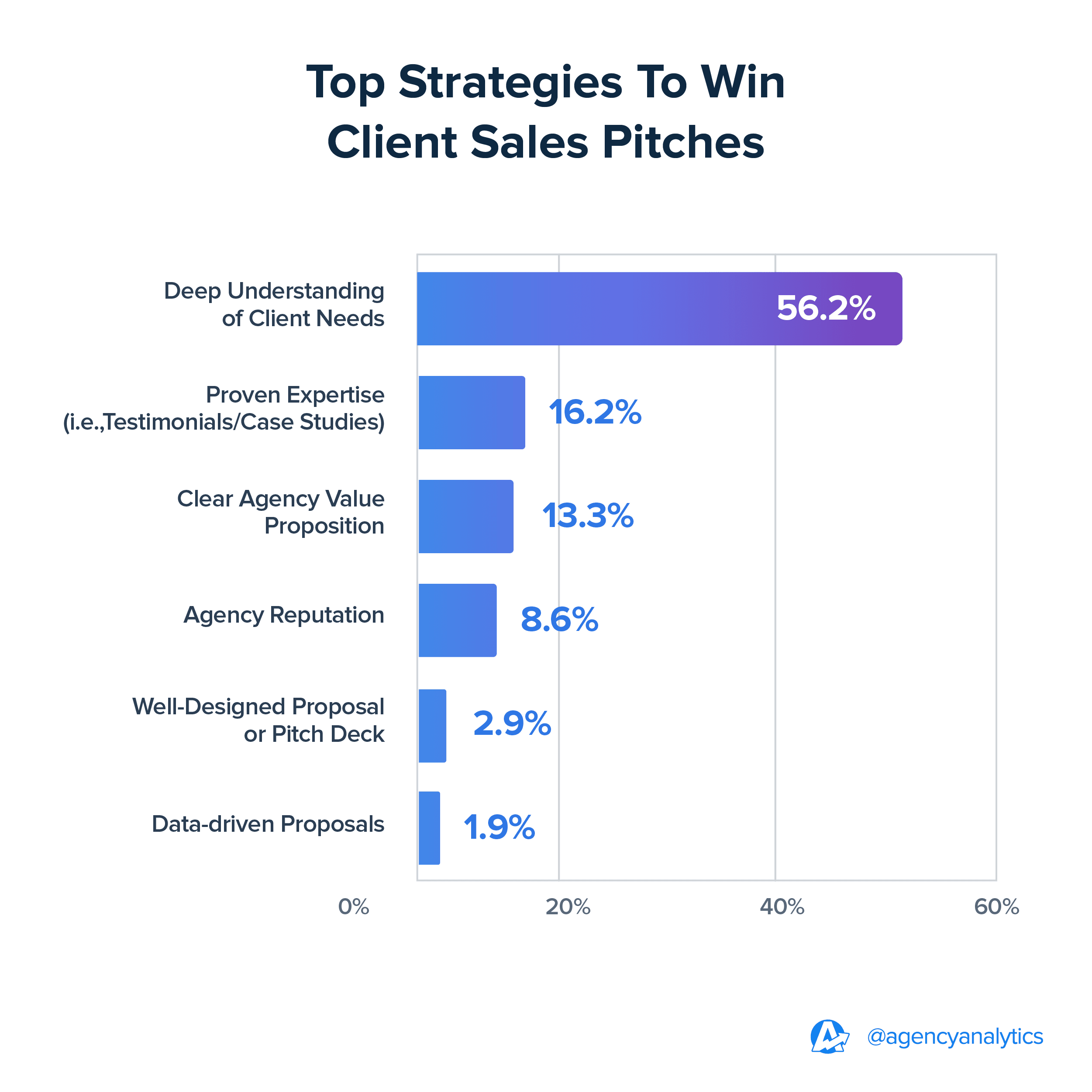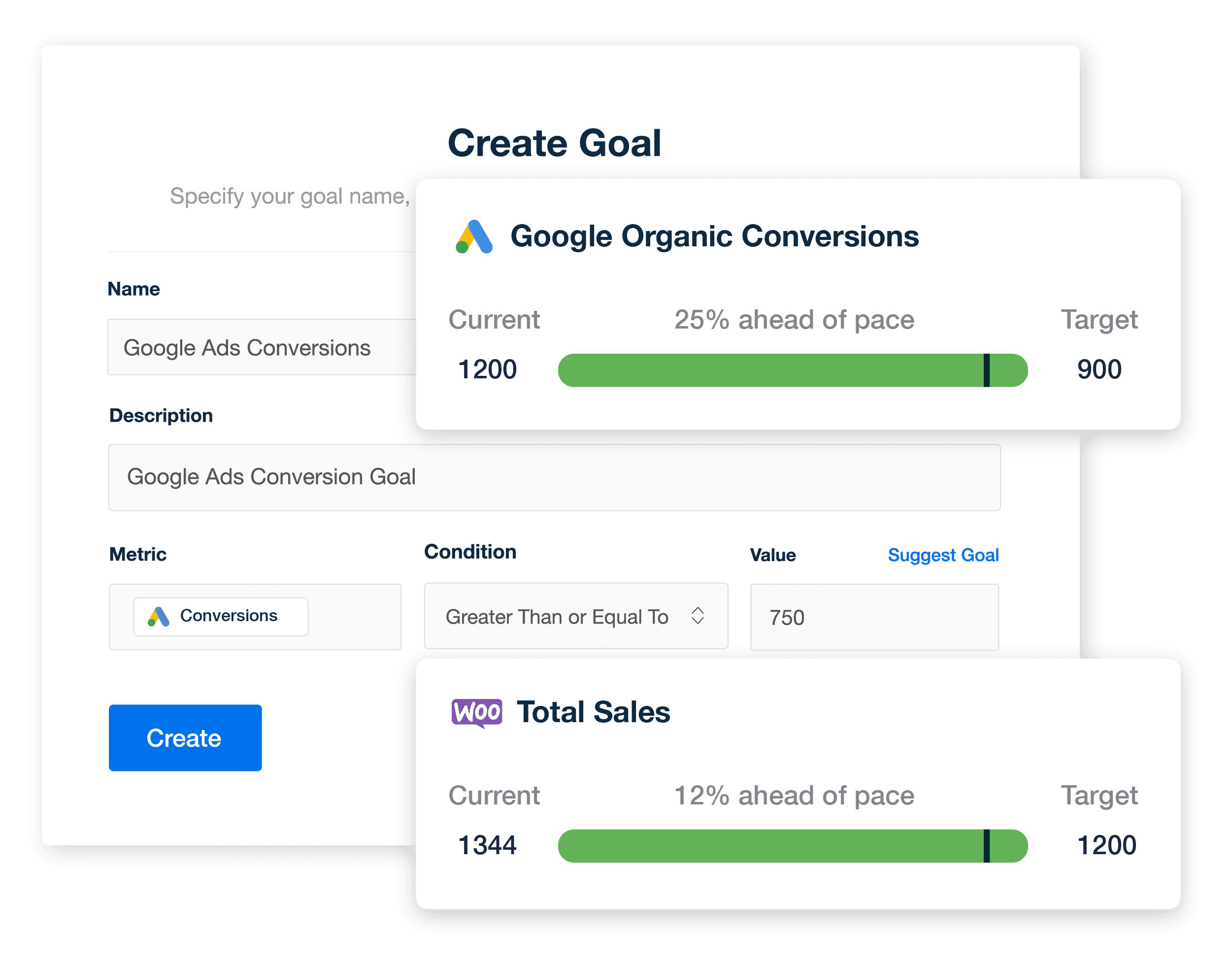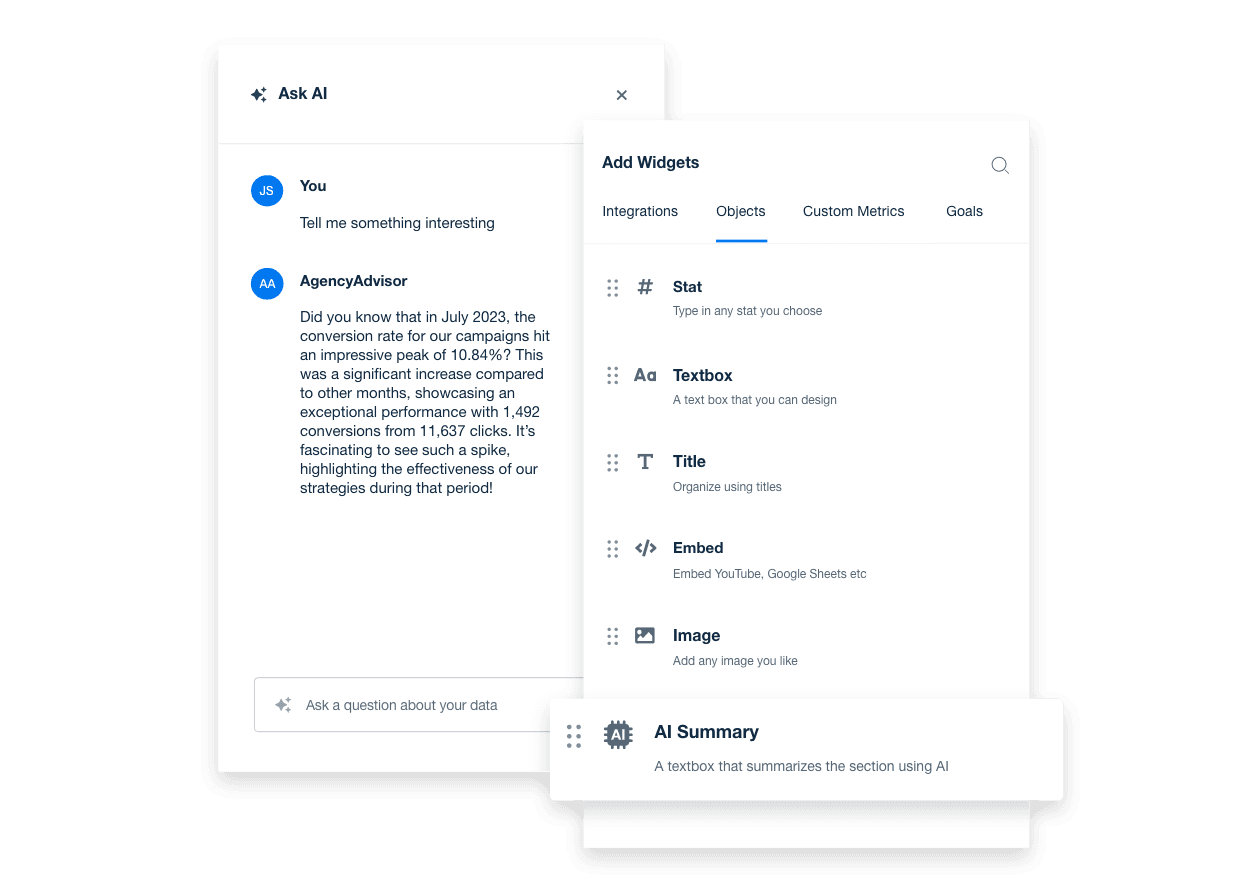Table of Contents
QUICK SUMMARY:
Client acquisition is challenging, even when initial discussions go smoothly, and leads appear promising. More often than not, it’s not the agency’s sales skills that cause hesitation—it's the client’s underlying fears. In this article, we identify the top fears of agency clients and share strategies for effectively addressing client concerns.
For agency owners, few things are more frightening than missing out on new business because the team couldn’t seal the deal. Often, the key to winning over new clients lies in uncovering their biggest fears about working with your agency and addressing them before it’s too late.
Whether they’re anxious about working with an agency for the first time or braving the waters again after a nightmare with a past agency, all client concerns are valid. But that doesn’t mean agencies can’t banish these fears and successfully close the deal.
In this article, we discuss the most common fears haunting agency clients and provide effective strategies for addressing those fears to close more deals.
Top 5 Fears of Agency Clients
You’ve pitched your services, answered dozens of questions, and schmoozed with their team. Still, you can’t help but sense that something is lingering in the shadows–a hesitation that could kill the deal. What might it be? Let’s look at the five most common fears of prospective agency clients.
1. Sticker Shock
One of the biggest anxieties clients struggle with is the price tag of working with an agency. This makes sense since agency services certainly aren’t getting any cheaper.
Costly Agency Fees
The AgencyAnalytics Marketing Benchmarks Report revealed that the majority of agencies are feeling the pinch of inflation–and 35% of agencies have increased their prices as a result. Clients don’t have much of a choice but to bite the bullet if they want to work with marketing experts.

Raising your service prices may be necessary to stay afloat, but steep costs may deter clients away, especially in a tough economy. To help them overcome price concerns, highlight the unique value your agency provides, such as time-saving automation, measurable results, and strategic insights that directly impact their bottom line.
Hidden Costs
Even when clients sign on the dotted line, they may still be haunted by the fear of unexpected costs. You can only imagine the horror stories clients have lived through involving:
Scope Creep Fees: Clients encounter this when agencies charge for every small task or revision beyond the initial scope. What starts as a minor adjustment quickly transforms into a Frankenstein of a bill.
Unclear Service Offerings: Poor communication can trick clients into believing they're getting a full suite of services. Only later do they discover that website changes, social media, or design work were never part of the deal.
Technology Fees: Clients might assume that third-party tools agencies use would be included in agency fees, but they sometimes receive surprise charges when invoices roll in.
Contract Penalties: Clients might sign long-term agreements, unaware of penalties lurking in the shadows for early termination or changes. These hidden terms often remain buried until they strike.
AN AGENCY HORROR STORY
In 2016, Japan’s largest advertising agency, Dentsu, admitted to $2.3 million in media overcharges for 111 clients, including Louis Vuitton SE, Toyota, Nestle SA, and Electronic Arts Inc. The overcharges were related to media placements and involved discrepancies in billing, where clients were charged for ads that ran incorrectly, were overbilled, or didn’t run at all.
Impress clients and save hours with custom, automated reporting.
Join 7,000+ agencies that create reports in minutes instead of hours using AgencyAnalytics. Get started for free. No credit card required.
2. Phantom Returns
Tim Akers, Founder of Akers Digital, sympathizes with clients adjusting to new agency partnerships while nervously anticipating results.
With any new relationship, there is a new structure and a new team, and sometimes, it just takes a few months to really see the major results. The first few weeks can be nerve-wracking as we change systems and setup.
Tim Akers, Founder, Akers Digital
It’s to be expected that clients might not see results immediately. But even after this grace period, many clients still worry whether they’ve made a substantial investment that might just vanish into the night.
When clients don’t see transparent reporting, real-time insights, or measurable progress, they doubt the effectiveness of the agency’s strategies and whether they will see ROI. This ongoing fear only leads to a breakdown in trust and hesitation to commit to new projects or contract renewals.
3. Brand Confusion
Clients often worry that an agency won’t “get” their brand as deeply as their in-house team. Despite thorough discovery meetings, it's tough for an agency to match the brand knowledge and hands-on experience that comes from years of working within the client's industry.
These hesitations about an agency’s lack of niche experience lead to growing doubt about whether the agency will develop strategies that resonate with the client’s audience or appropriately align tactics.
4. Heavy Upsells
Clients worry that working with a marketing agency might lead to never-ending pressure to purchase additional services. They may reach a point where they feel the agency is more focused on boosting their own bottom line over the client’s needs.
While upselling is an undeniably effective strategy for growing agency revenue, clients don’t want to feel pressured into agreeing to services they aren’t prepared for, financially or strategically. This fear of constantly being “sold to” makes clients wary of every meeting or report review, wondering if they’ll be asked to open their wallets again.
5. Recurring Nightmares
We asked agency leaders in our community who they thought were more apprehensive about working with agencies: A) Those who have never worked with an agency before. B) Those who have worked with an agency but had a negative experience. Agency leaders unanimously agreed that clients with a prior negative experience are much more apprehensive.
Clients who have previously worked with an agency have already faced disappointment, whether it was a lack of results, poor communication, or unexpected costs. These negative experiences create a sense of distrust that’s harder to overcome compared to clients who are new to agency partnerships.
Shay Cohen, CEO, SFB Digital Marketing
The brand/agency partnership works really well when there is a lot of trust there, and a negative experience with a prior agency makes it difficult to build that trust.
Tim Akers, Founder, Akers Digital.
Clients new to working with agencies may come with a sense of curiosity and openness. But for clients burned by fake promises, poor results, or shocking costs, even minor issues like unclear timelines could reinforce their skepticism. Their past experiences create a significant trust barrier that isn’t easy to break through.
Agencies that strive to close deals must learn how to approach these relationships with complete transparency, empathy, and a clear value-driven strategy.
Exorcizing Client Concerns: 5 Tricks To Treat Your Clients Right
Now that we know what keeps clients up at night, let’s discuss ways to turn horrifying nightmares into sweet dreams.
The idea is to reframe your agency’s approach to build trust and address client concerns right from the start.
1. Hear the Whispers With Active Listening
When we asked agencies about their top strategies for winning sales pitches, the overwhelming majority identified a deep understanding of client needs as their top success strategy.

The first step to gaining this understanding is active listening, a communication tactic in which the agency creates space to fully grasp the client’s thoughts and empathize with their underlying feelings. Active listening ensures clients feel heard, acknowledged, and deeply understood before the agency suggests services or solutions.
In a recent guest article, Jessica Tappana, mental health therapist and Owner of Simplified SEO Consulting, stresses just how equally important it is to validate your clients’ feelings by responding with empathetic statements like "This is really important to you” and "You're upset because you're not getting the results you expected." She shares how such statements don’t just acknowledge the clients’ emotions but help take their defensiveness down for more productive agency/client conversations.
2. Lift the Veil on Pricing
There’s no point in avoiding conversations about pricing only to have to do damage control later on. To build a transparent agency/client relationship, it’s best to be upfront about your agency’s pricing structure. Provide accurate estimates for all potential costs so clients know exactly what to expect. This transparency goes a long way in building trust with clients, who hopefully will choose to return for repeat business.
One client we worked with had a major fear of hidden costs after a previous agency experience where unexpected fees piled up. They were hesitant to start a new project, worried that the same thing would happen again.
To address this concern, we took a transparent approach from the start. We provided a detailed, itemized proposal that broke down every cost involved, leaving no room for surprises. We also introduced them to our structured pricing model, which clearly outlined any potential additional costs in case of scope changes. Additionally, we committed to regular check-ins to review progress, ensuring they always knew where their budget was going.
This transparency immediately reassured the client. They appreciated our open communication and attention to detail, which contrasted with their past experience. As a result, they chose to move forward with us, and the project was completed on time and within budget, building a strong, long-term relationship.
Shay Cohen, CEO, SFB Digital Marketing
Another way to address client concerns about pricing is to relieve clients from the pressures of long-term contracts. Instead, offer flexible contracts like:
30-60-Day Trial Contracts: These let prospective clients test drive your agency’s services before signing on for longer periods. This reassures clients they can exit if results don’t match expectations.
Flexible Retainers: These agreements allow for flexibility in billing, either by adjusting fees based on performance (e.g., a pay-for-results model) or by allowing the scope of work to vary month-to-month as client needs change.
Pause and Restart Contracts: These contracts allow clients to temporarily pause and resume the agency's work later without penalties.
Rolling or Performance-Based Exit Clauses: These contract clauses offer clients an easy exit if performance metrics aren’t met within a set timeframe.
3. Implement a Feedback System to Banish Concerns Immediately
Think of a feedback system as your agency's way to cast out client worries before they become lingering ghosts. A feedback system that creates a safe space for negative feedback allows clients to share concerns as they arise.
Jessica Tappana recommends reserving the most difficult conversations for face-to-face contact, whether in person or over Zoom.
Receiving client feedback in person allows for immediate clarification and fosters a more personal connection. The face-to-face interaction shows genuine interest and concern through body language, making the conversation more effective for both sides.
This proactive and open approach to receiving feedback demonstrates that your agency cares about your client’s opinions and is committed to ensuring complete client satisfaction.
4. Summon the Specialists To Vanquish Niche Knowledge Gaps
Consider hiring specialists to help you tackle clients in complex niches. This approach reassures clients that your campaigns will be grounded in market expertise and industry-specific knowledge. It also positions your agency as a partner that goes above and beyond to meet your client’s unique needs.
An example of an agency thriving with this approach is Terrayn, a cannabis marketing agency. By hiring an account manager who previously owned a cannabis dispensary, Terrayn gained an in-depth understanding of a niche market. This move reassures clients of the agency’s expertise and ability to effectively navigate the unique challenges of the cannabis industry.
5. Offer the Crystal Ball of Transparent Client Reporting
Offering detailed client reports provides clients with complete transparency into your agency’s activities. This alleviates concerns over hidden work or unclear agency value.
Shay Cohen, CEO of SFB Digital Marketing, shared how he uses AgencyAnalytics to address clients' concerns throughout their entire journey.
Initial Onboarding
"We start by setting clear KPIs and goals with the client, outlining what success will look like. We use AgencyAnalytics to create custom dashboards that show these goals in real-time, ensuring clients have immediate visibility into their campaigns from day one."

Build custom dashboards in seconds flat. Personalize each dashboard to match your client’s goals and ensure complete transparency early on. Try AgencyAnalytics free for 14 days.
Ongoing Campaigns
"Regular reports help alleviate fears about performance. Clients can see key metrics such as traffic, conversions, ROI, and ad spend in an easy-to-understand format. This data reassures them that their investment is being managed effectively and their goals are being met."

Don’t let clients get caught in a web of uncertainty about timelines and results. AgencyAnalytics’ custom goal-tracking feature helps clients visualize success. Try it free for 14 days.
Strategy Adjustments
"When a campaign isn't performing as expected, we use data-driven insights from AgencyAnalytics to quickly adjust strategies. By sharing this process with the client, we demonstrate our proactive approach, which helps mitigate their concerns about wasted time or money."
Unlike a shady fortune teller, AgencyAnalytics reports are grounded in data. No tricks, just in-depth insights, giving clients a clear vision of their campaigns. Try it free for 14 days.
End of Campaign Reviews
"At the end of each campaign, we present a detailed report that shows the ROI, lessons learned, and next steps. This final report not only addresses fears about long-term value but also sets the stage for future work by showcasing successful outcomes."

Automate analysis, uncover hidden insights and craft compelling narratives for personalized, actionable marketing reports with AgencyAnalytics’ AI tools. Try Ask AI and AI Summary for free for 14 days.
Offering consistent, transparent reporting is a top strategy for reducing client anxiety, building trust, and working towards long-term partnerships.
Build Client Trust With Transparency, Data, and Action
Clients are bound to have concerns about working with an agency. The key is not to wait until these fears become monsters that are much harder to slay.
Active listening, transparent pricing, flexible contracts, and open feedback systems are just a few ways to position your agency as a trusted team. Meanwhile, using a transparent, data-driven reporting tool throughout the client journey will undoubtedly provide the reassurance clients seek.
Just like driving a stake through a vampire’s heart, it’s 100% possible to put client fears to rest one by one, leaving no concerns lurking in the shadows.

Written by
Sylva is an expert content writer with over 10 years of experience in tech and SaaS, offering first-hand insight into agency needs from her background in advertising.
Read more posts by Sylva SivzattianSee how 7,000+ marketing agencies help clients win
Free 14-day trial. No credit card required.






